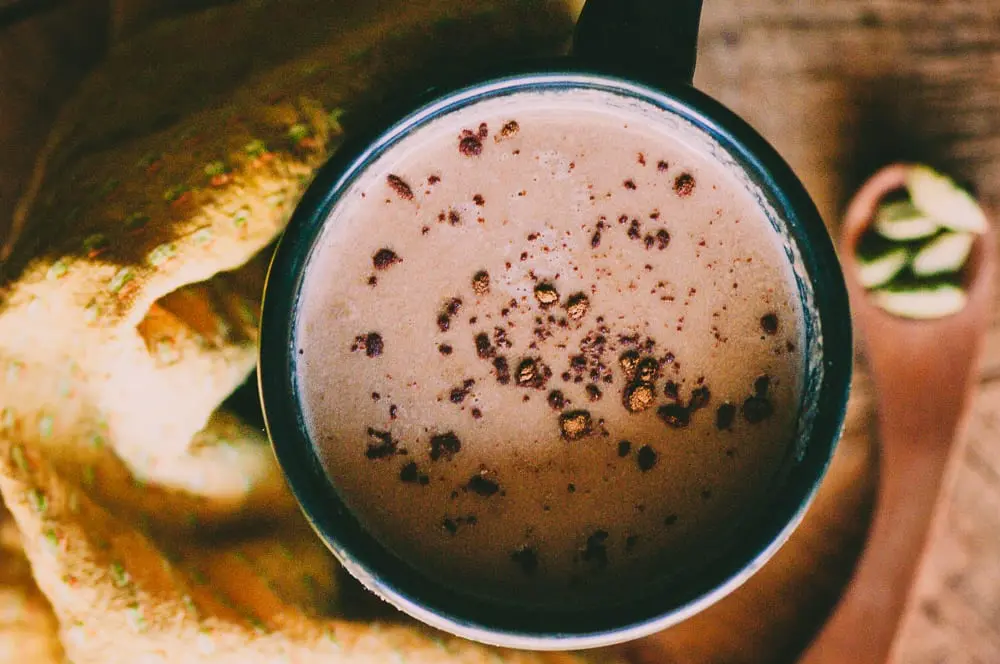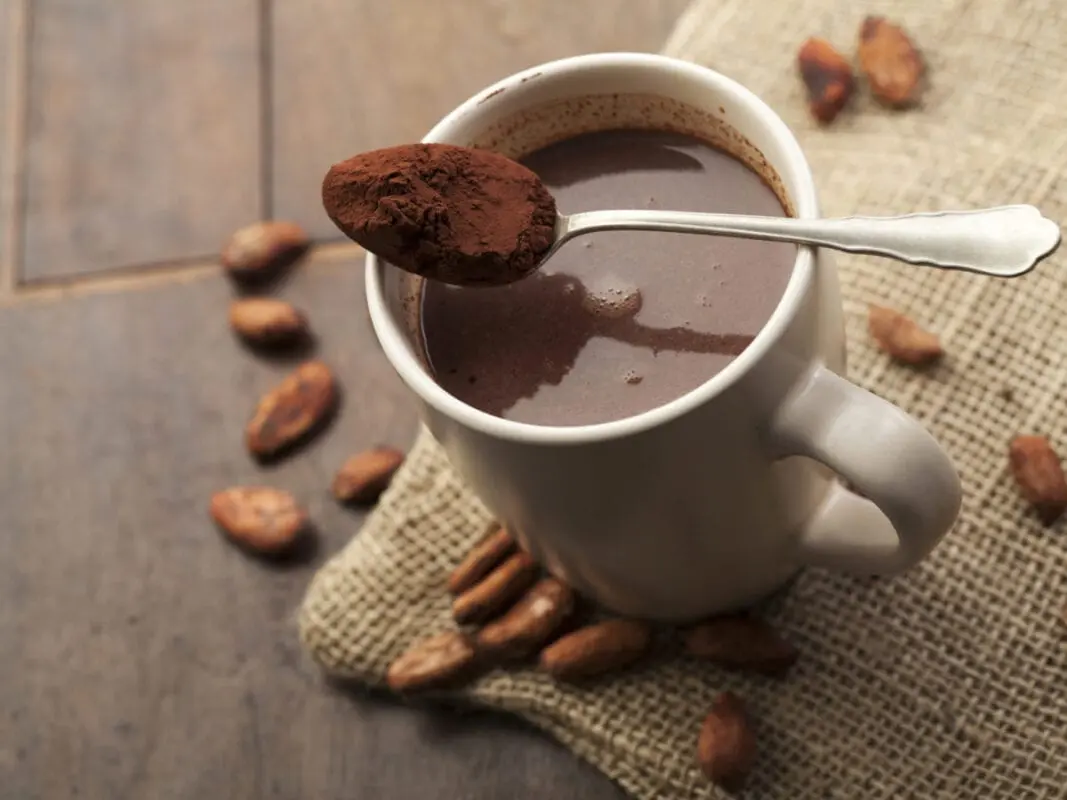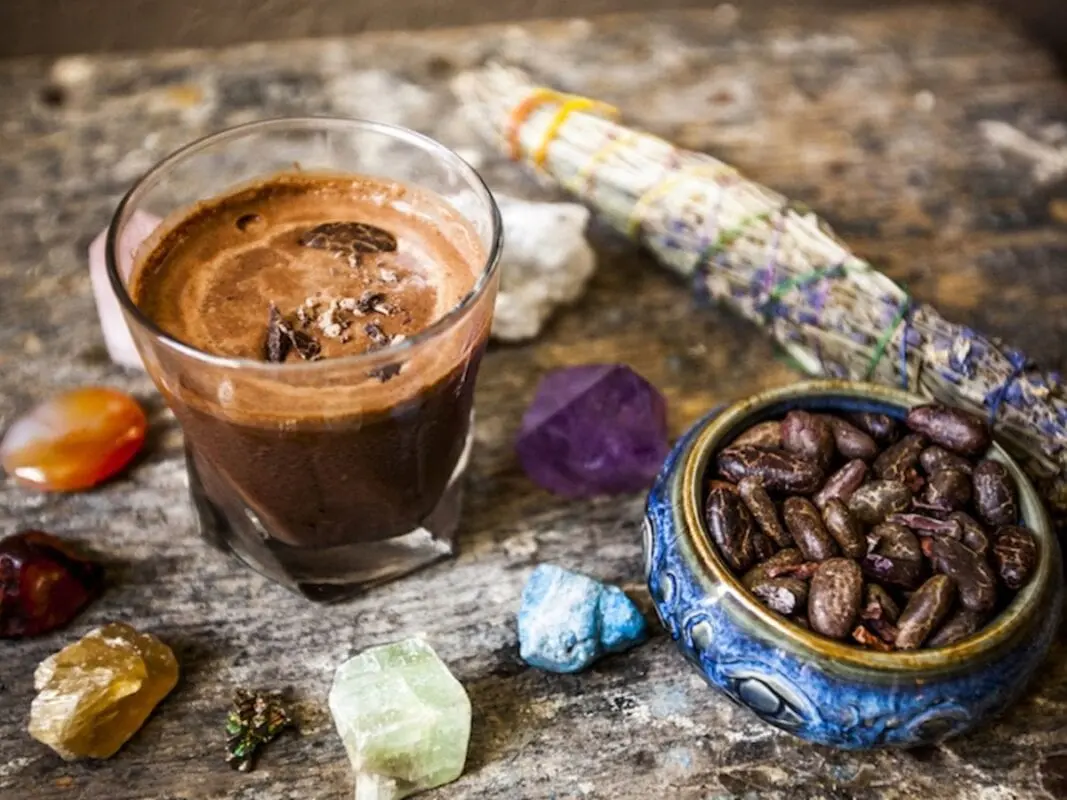Contents
Description
Cocoa (lat. theobroma cacao – food of the gods) is a refreshing and flavorful non-alcoholic drink based on milk or water, cocoa powder, and sugar.
Cocoa powder for making the drink for the first time (about 3,000 years ago) began to use the ancient tribes of the Aztecs. The privilege of drinking the beverage enjoyed only men and shamans. Ripe cocoa beans they pulverized into powder and bred in cold water. There they also added hot pepper, vanilla, and other spices.
In 1527, the drink entered the modern world thanks to the Spanish colonizers in South America. From Spain, cocoa began its steady March across Europe, changing preparation and composition technology. The prescription removed the pepper and added honey in Spain, and people started to warm up the drink. In Italy, it became popular in a more concentrated form, and people started to produce a modern prototype of hot chocolate. The English people were the first to add to the beverage the milk, infusing it with softness and ease. In the 15-17 centuries in Europe, drinking cocoa was a symbol of respectability and prosperity.

There are three classic recipes for a cocoa drink:
- melted in the milk and whipped to foam with a bar of dark chocolate;
- brewed beverage with milk and dry cocoa powder, sugar, and vanilla;
- diluted in water or milk instant cocoa powder.
While making hot chocolate, you should only use fresh milk. Otherwise, the milk will curdle, and the drink will be ruined.
Сocoa benefits
Due to the large diversity of trace elements (calcium, magnesium, iron, potassium, copper, zinc, manganese), vitamins (B1-B3, A, E, C), and useful chemical compounds, cacao has many positive properties. Such as:
- magnesium helps to cope with stress, relieve tension, relax the muscles;
- iron strengthens the blood-forming function;
- calcium strengthens the bones and teeth in the body;
- anandamide stimulates the production of endorphins, a natural antidepressant, thereby lifting the mood;
- feniletilamin allows the body to endure heavy exercise much easier and quickly restore power;
- bioflavonoids prevent the occurrence and growth of cancerous tumors.

Useful antioxidant flavanol in the ripe cocoa beans preserves in the powder and, respectively, in the drink. The body’s assimilation enhances sensitivity to insulin in the disease of diabetes, nourishes the brain, and stimulates the activity of the cardiovascular system. Cocoa also contains a very rare chemical compound, epicatechin, which lowers blood pressure, improves cerebral blood flow and short-term memory.
In older age, cocoa drink’s daily consumption prevents memory problems and enhances the ability to shift attention.
As cosmetics
Cocoa without sugar is also good as a means to care for the face and neck. Dipp in a warm drink gauze and apply it for 30 minutes. This mask smoothes fine lines, gives skin elasticity and tone, skin looks much younger.
For hair, you can use a more concentrated cocoa drink with added coffee. You should apply it across the length of the hair for 15-20 minutes. This will create the effect of shading to chestnut brown color and give hair a healthy Shine.
Some dietitians recommend that people who wish to lose weight use cocoa without sugar and heavy cream.
It is beneficial to drink hot cocoa for children from 2 years for Breakfast. It will give them the energy to be active the whole day.

The dangers of cocoa and contraindications
Firstly, it would help if you did not drink cocoa in congenital intolerance to drink, for children under 2 years, people with increased secretion of gastric juice.
The tannins in cocoa, in excessive consumption, can lead to constipation.
With increased excitability of the cardiovascular and nervous systems, you should be very careful with cocoa since it acts as a stimulant.
Also, it would be best if you didn’t drink cocoa at night – it can lead to insomnia and sleep disturbance. In conclusion, For people prone to migraines are inherent in cocoa substances like theobromine, phenylethylamine, and caffeine can cause severe headaches and vomiting.
Useful and dangerous properties of other beverages:









